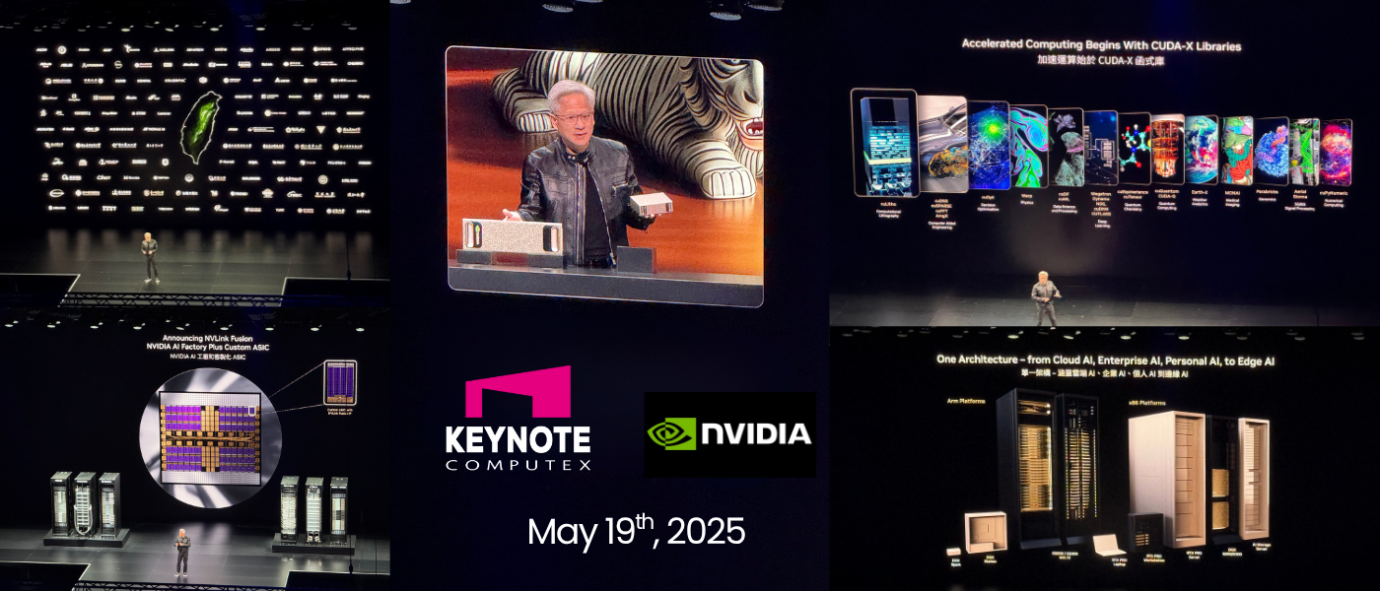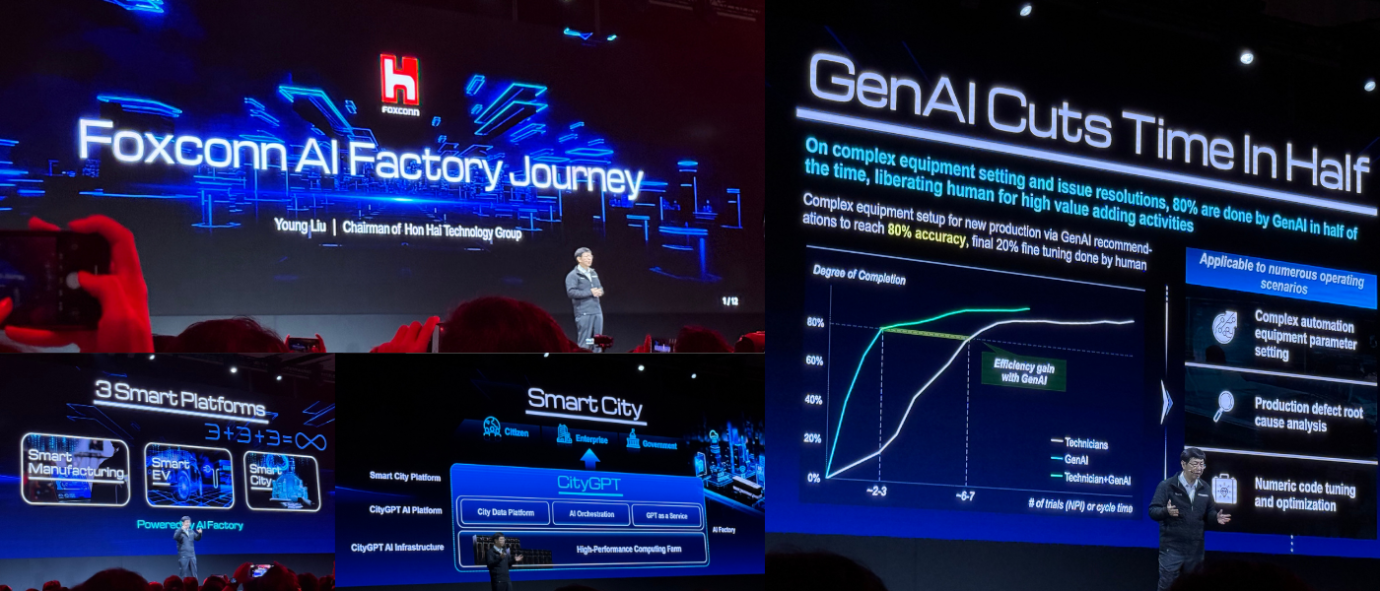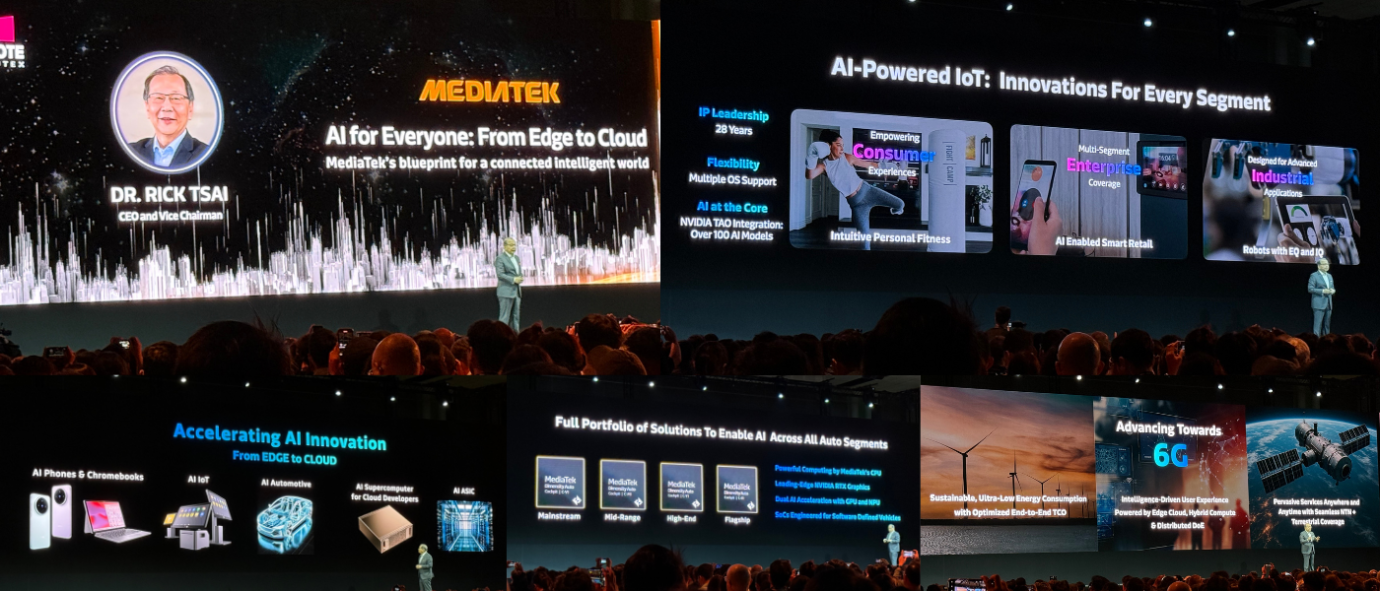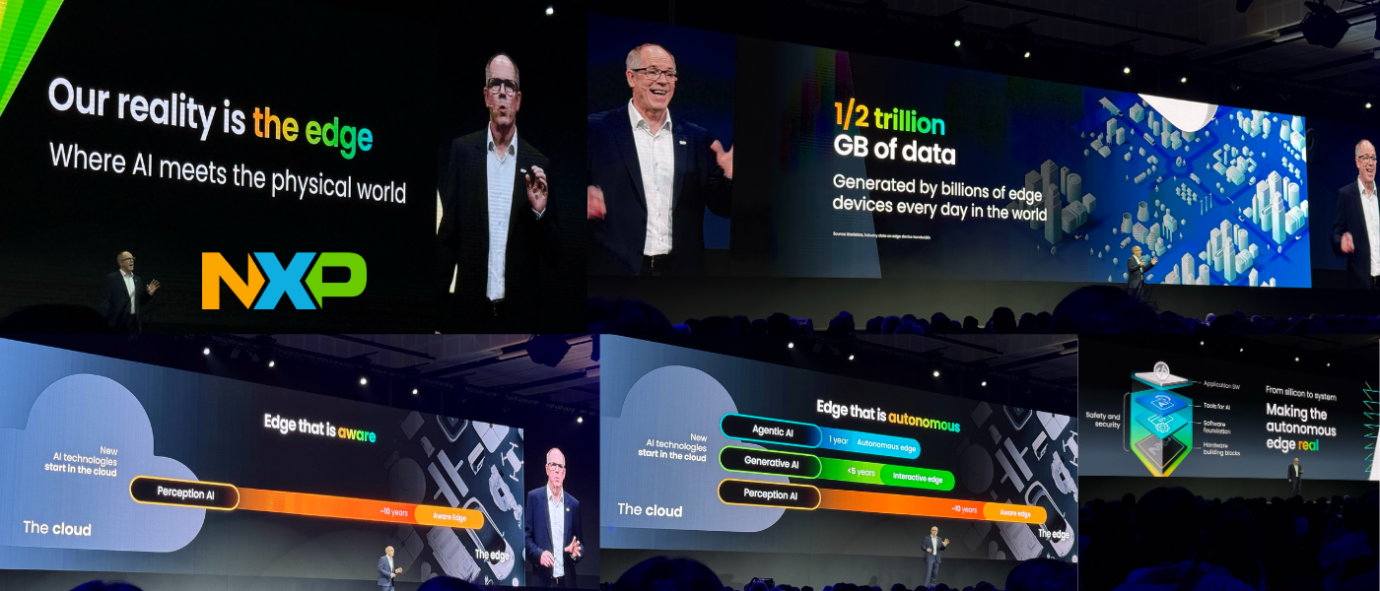All You Need to Know About COMPUTEX 2025 Keynotes

COMPUTEX 2025 just wrapped up in Taipei, and this year’s theme—“AI Next”—perfectly captured the energy and vision of what’s to come. From groundbreaking AI infrastructure to on-device intelligence in PCs, wearables, and robots, the keynotes set the stage for a future powered by accelerated computing and real-time AI.
The keynote stages were packed with vision and innovation, featuring industry leaders like NVIDIA, Qualcomm, Foxconn, MediaTek, and NXP. From next-gen AI factories and hybrid chip architectures to powerful NPUs for Copilot+ PCs and local intelligence for smart cities, the announcements made it clear—the age of AI-native computing has arrived.
In this blog, we’ve rounded up the key takeaways and standout moments from the COMPUTEX 2025 keynotes, so you can catch up in minutes—not hours.

🔹 NVIDIA Keynote Recap: The AI Factory Era Begins
NVIDIA CEO Jensen Huang took the stage at COMPUTEX 2025 with a 100-minute keynote that redefined the trajectory of AI infrastructure. His central vision? AI factories—a new kind of data center designed to produce intelligence at scale, much like traditional factories produce goods.
Key Highlights:
- NVLink Fusion:
NVIDIA introduced NVLink Fusion, an open platform that enables CPU vendors—like MediaTek and Qualcomm—to integrate their processors with NVIDIA GPUs. This collaborative architecture aims to break silos in AI system design, paving the way for broader hardware compatibility and modular AI deployments, including at the edge. - DGX GB200 & DGX Spark:
NVIDIA revealed its next-generation AI supercomputer architecture powered by the Grace Blackwell Superchip, combining CPU and GPU performance with 800 GB/s bandwidth. For smaller-scale or workstation users, DGX Spark was introduced as a compact, high-performance AI workstation—ideal for AI development, simulation, and inferencing. - NVIDIA Constellation in Taiwan:
Strengthening its long-term presence, NVIDIA announced a new AI R&D hub—NVIDIA Constellation—to be built in Taipei’s Beitou-Shilin Science Park. This move not only highlights Taiwan’s importance in global AI innovation but also opens the door for local ecosystem collaboration, especially for partners like C&T Solution, who are enabling AI on the industrial edge. - AI-Driven Robotics with Project Groot & Isaac Platform:
NVIDIA expanded its Isaac robotics platform with Project Groot, an advanced AI model that allows robots to learn by observing humans. Combined with Newton, a new foundation model for robotics, this development signals a new era of intelligent automation—where real-time edge inference becomes mission-critical. For rugged environments where latency, reliability, and compute power matter, this aligns perfectly with C&T’s Jetson AGX Orin-based JCO-6000-ORN Series.

🔹 Qualcomm: Copilot+ PCs and Dragonwing™ for Embedded AI
At COMPUTEX 2025, Qualcomm showcased its expanded vision for AI—across personal computing and embedded edge systems. While much of the spotlight was on Snapdragon X Series processors for Copilot+ PCs, a major announcement for industrial and embedded sectors was the debut of Qualcomm Dragonwing™.
Key Highlights:
- Snapdragon X Elite and X Plus:
Designed for AI-enhanced laptops, these chips integrate powerful NPUs delivering up to 45 TOPS, enabling on-device generative AI and improving user experience with Microsoft Copilot+ PCs. - Qualcomm Dragonwing™:
Purpose-built for embedded and industrial edge AI, Dragonwing is a new platform that brings Snapdragon-class AI acceleration to headless systems, robotics, industrial cameras, and IoT edge nodes. It’s designed for long-life, power-efficient embedded deployments with advanced capabilities in vision processing, voice recognition, and machine learning inference—all without cloud dependence. - Collaboration with NVIDIA:
As part of NVLink Fusion, Qualcomm is also developing data center-class processors that will tightly integrate with NVIDIA GPUs—offering new possibilities for hybrid edge-cloud deployments.

🔹 Foxconn: Genesis AI Factory & Future Mobility
Foxconn outlined its bold vision for the AI Factory—a reimagined data center that serves as a production line for intelligence. During its keynote, Foxconn introduced Genesis, its proprietary AI model, and shared how it is transforming digital twins, robotics, and smart manufacturing.Key Highlights:
- Genesis AI Model:
A foundation model built for factory optimization, integrating simulation (via digital twin), AI planning, and robotic control. - EV OEM Collaboration:
Foxconn's automotive arm Foxtron announced it would begin manufacturing EVs starting in 2026, with 80% of development led by Mitsubishi—including AI and control systems. - AI Supercomputer in Taiwan:
In collaboration with NVIDIA and TSMC, Foxconn will build Taiwan’s first national AI supercomputer, reinforcing Taiwan’s central role in AI advancement.

🔹 MediaTek: Edge AI for Smart Devices
MediaTek showcased its latest Dimensity processors and AI processing roadmap with a strong emphasis on on-device intelligence for mobile, automotive, and smart home ecosystems.
Key Highlights:
- Dimensity 9400:
Built on TSMC’s 3nm process, this flagship chip combines CPU, GPU, and NPU performance to bring AI features like real-time noise suppression, vision processing, and generative AI directly to smartphones. - Partnership with NVIDIA via NVLink Fusion:
MediaTek will be among the first companies to integrate its processors with NVIDIA GPUs under the NVLink Fusion architecture—supporting next-gen automotive and embedded AI systems.

🔹 NXP: Scaling Secure Edge AI for Industrial and Automotive
At COMPUTEX 2025, NXP Semiconductors reinforced its position as a leader in secure, scalable edge AI platforms, especially for industrial automation and automotive applications. Their keynote focused not only on hardware performance but also on ecosystem growth through strategic acquisitions and software enablement.Key Highlights:
- i.MX 95 and S32G3 Processors:
Designed for edge AI workloads in vehicle control units, factory controllers, and industrial gateways, these new SoCs support real-time inferencing, ASIL safety compliance, and Time-Sensitive Networking (TSN) for deterministic data flows. - Strategic Acquisitions:
- NXP is actively expanding its edge AI capabilities through acquisitions, including Kinara (enable agentic AI and multimodal processing like LLaVA for local vision and language understanding), Aviva (provide high-speed connectivity solutions crucial for data-heavy edge applications), and TTTech Auto (brings trusted safety and security technologies for autonomous and mission-critical systems)

Edge AI Is Reshaping the Future: 4 Key Trends from Gartner’s 2025 Outlook
At COMPUTEX 2025, Gartner highlighted 12 technologies that will shape the future. Among them, Edge AI—processing AI directly on local devices—is quickly becoming foundational across industries. Here are four trends that explain why.- Energy-Efficient Computing
With the rapid rise in AI workloads, power consumption is becoming a critical bottleneck. Gartner predicts that by 2026, more than 30% of data center expansion plans could face delays due to energy constraints. This is driving innovation in low-power, high-performance computing architectures, particularly for decentralized and real-time applications. - Earth Intelligence
Earth Intelligence integrates satellite imaging, remote sensors, and asset tracking to provide timely, actionable environmental insights. The trend is moving toward systems that can process data closer to its source, reducing latency, transmission costs, and reliance on cloud infrastructure. - Sensor Fusion
The future of connected systems—like smart cities, autonomous vehicles, and healthcare monitoring—depends on the seamless integration of data from multiple sensors. Advances in real-time, on-device data analysis are enabling faster, more context-aware decision-making without constant communication with centralized servers. - Algorithm-Aligned Silicon (AASA)
As AI models become more specialized, so do the chips that run them. Instead of using general-purpose GPUs, the trend is shifting toward custom silicon designed to match specific algorithms. These compact, efficient processors are unlocking new possibilities in edge computing, robotics, and embedded AI applications.
Conclusion: The Future of AI Is Local, Intelligent, and Industry-Ready
From visionary keynotes at COMPUTEX 2025 to Gartner’s outlook on Edge AI, one message is clear: AI is shifting from centralized clouds to intelligent endpoints. Whether it’s NVIDIA’s AI factories, Qualcomm’s embedded Dragonwing™ platform, Foxconn’s digital twin-driven automation, MediaTek’s smart mobility chips, or NXP’s secure industrial edge—every major player is investing in AI that operates closer to where data is generated.Gartner’s top trends—energy-efficient computing, sensor fusion, Earth intelligence, and algorithm-aligned silicon—reinforce this direction, highlighting how real-world AI will demand low power, real-time performance, and hardware-software optimization at the edge.
At C&T Solution, we’re aligned with this future. Our rugged edge AI computers and embedded systems are already designed to meet the demands of decentralized processing—supporting applications from smart factories and robotics to transportation, asset tracking, and environmental monitoring. As AI becomes more pervasive and specialized, we remain committed to building modular, scalable, and future-proof platforms that bring intelligence right to the edge—where decisions matter most.
If you have any additional questions, feel free to contact our rugged tech experts. We're here to help you move your AI projects forward.

